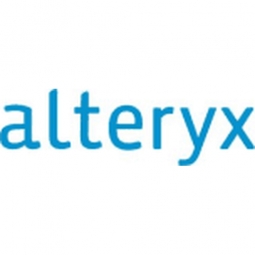Download PDF
Pepsico's Transformation to Smarter Sales Forecasting with Designer Cloud
Applicable Industries
- Consumer Goods
- Retail
Applicable Functions
- Procurement
- Sales & Marketing
Use Cases
- Demand Planning & Forecasting
- Time Sensitive Networking
Services
- Cloud Planning, Design & Implementation Services
The Challenge
PepsiCo, a global consumer packaged goods company, faced a significant challenge in calibrating sales forecasting to supply the right product quantities to its retailers. The sales forecast incorporated a variety of data, including warehouse data, store stock data, and promotional forecast data, all of which were provided by retailers in different file formats and delivered using various methods. The primary challenge was the speed of preparing a sales forecast. With the existing Microsoft Access and Excel-based processes, the time required to prepare this data was so extensive that analysts could only leverage it once a month or not at all. This inefficiency risked under or oversupplying retailers, potentially impacting PepsiCo's business operations and customer relationships.
About The Customer
PepsiCo is a global consumer packaged goods company whose products are enjoyed by consumers more than one billion times a day in over 200 countries and territories worldwide. The company's product portfolio includes a wide range of enjoyable foods and beverages, with 23 brands that generate more than $1 billion each in estimated annual retail sales. PepsiCo's operations involve a complex supply chain, with a need for accurate and timely sales forecasting to ensure the right product quantities are supplied to its retailers.
The Solution
To address this challenge, PepsiCo built a Microsoft Azure data lake for centralized data storage and access. The company also implemented Designer Cloud, which analysts trained in Excel and SQL could easily adapt to. This solution enabled the analysts to prepare and standardize diverse retailer data significantly faster for visualization in Tableau. Unlike Excel, which had size limitations requiring analysts to stitch together multiple spreadsheets, Designer Cloud allowed PepsiCo to see the full picture of its data and quickly spot any errors or inconsistencies. As a result, analysts spent less time on data preparation and could dedicate the majority of their time to analyzing data and predicting trends, driving more value for the company.
Operational Impact
Quantitative Benefit
Related Case Studies.
.png)
Case Study
Improving Vending Machine Profitability with the Internet of Things (IoT)
The vending industry is undergoing a sea change, taking advantage of new technologies to go beyond just delivering snacks to creating a new retail location. Intelligent vending machines can be found in many public locations as well as company facilities, selling different types of goods and services, including even computer accessories, gold bars, tickets, and office supplies. With increasing sophistication, they may also provide time- and location-based data pertaining to sales, inventory, and customer preferences. But at the end of the day, vending machine operators know greater profitability is driven by higher sales and lower operating costs.

Case Study
Improving Production Line Efficiency with Ethernet Micro RTU Controller
Moxa was asked to provide a connectivity solution for one of the world's leading cosmetics companies. This multinational corporation, with retail presence in 130 countries, 23 global braches, and over 66,000 employees, sought to improve the efficiency of their production process by migrating from manual monitoring to an automatic productivity monitoring system. The production line was being monitored by ABB Real-TPI, a factory information system that offers data collection and analysis to improve plant efficiency. Due to software limitations, the customer needed an OPC server and a corresponding I/O solution to collect data from additional sensor devices for the Real-TPI system. The goal is to enable the factory information system to more thoroughly collect data from every corner of the production line. This will improve its ability to measure Overall Equipment Effectiveness (OEE) and translate into increased production efficiencies. System Requirements • Instant status updates while still consuming minimal bandwidth to relieve strain on limited factory networks • Interoperable with ABB Real-TPI • Small form factor appropriate for deployment where space is scarce • Remote software management and configuration to simplify operations

Case Study
How Sirqul’s IoT Platform is Crafting Carrefour’s New In-Store Experiences
Carrefour Taiwan’s goal is to be completely digital by end of 2018. Out-dated manual methods for analysis and assumptions limited Carrefour’s ability to change the customer experience and were void of real-time decision-making capabilities. Rather than relying solely on sales data, assumptions, and disparate systems, Carrefour Taiwan’s CEO led an initiative to find a connected IoT solution that could give the team the ability to make real-time changes and more informed decisions. Prior to implementing, Carrefour struggled to address their conversion rates and did not have the proper insights into the customer decision-making process nor how to make an immediate impact without losing customer confidence.

Case Study
Digital Retail Security Solutions
Sennco wanted to help its retail customers increase sales and profits by developing an innovative alarm system as opposed to conventional connected alarms that are permanently tethered to display products. These traditional security systems were cumbersome and intrusive to the customer shopping experience. Additionally, they provided no useful data or analytics.







